DEEP DIVE
Another rare visitor sent home to Antarctica from SA may help unlock marine mysteries
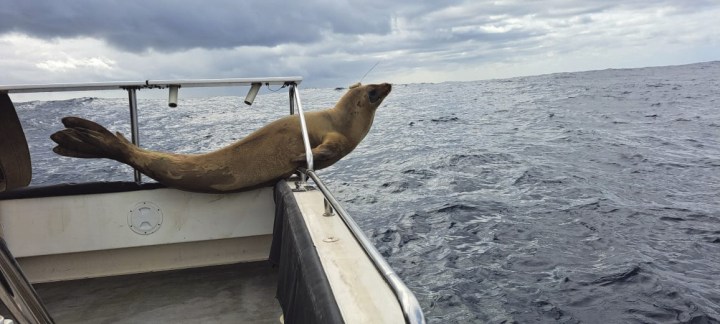
A few crabeater seals, whose homes are usually ice packs around Antarctica, have inexplicably ended up in South Africa over the past few years. The most recent one was released back into the sea a week ago and is being tracked.
She is stretched out resplendently, head held high, along the side of a boat.
Emily looks poised to take a dip in the ocean. And that is exactly what she does.
She plops into the water, heads out, and it is now hoped that Emily is swimming towards her home in Antarctica.
This is quite a trip as a previous South African marine research government document said that “we are the closest African point to the South Polar region, separated from the continent of Antarctica by about 4,000km of open ocean”.
Emily, who may now be well into that journey, is a crabeater seal, one of roughly 10 discovered or spotted along South Africa’s coastline over about a decade.
Read more in Daily Maverick: Southern Ocean seal species increasingly straying into South African waters
While it is not clear exactly why crabeaters are increasingly ending up in this country, it is hoped that those captured, rehabilitated and released back into the ocean could provide deep-sea details about this.
Daily Maverick has reported on an increase in the number of the seals ending up in South Africa – and on instances where crabeater seals have been released back into the sea.
Those cases hint at the extreme conditions and situations – ranging from ending up back along the coast and inadvertently ingesting sand, to storms and potential shark encounters – the seals could experience when possibly trying to get home.
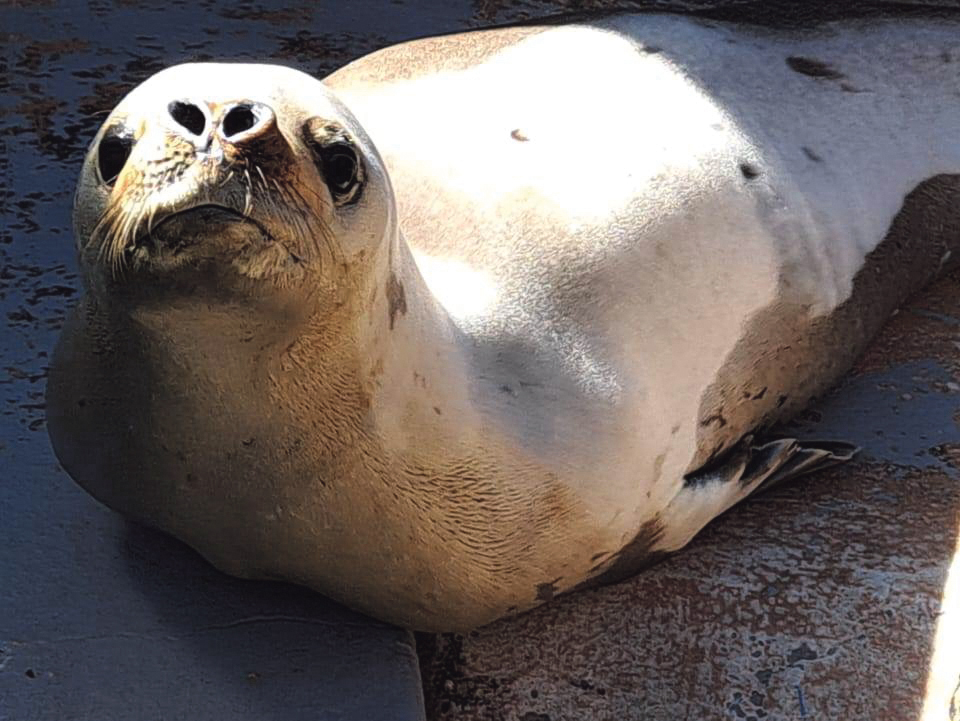
Emily during her rehabilitation at Bayworld. (Photo: Greg Hofmeyr)
‘Carried by currents’
Last week, Greg Hofmeyr, curator of marine mammal research at Bayworld in Gqeberha, confirmed that it was still not exactly clear why crabeaters were finding themselves along this country’s shoreline.
“It is, however, important to monitor these strandings so that we can possibly find an answer,” he told Daily Maverick.
“The fact that years go by without any crabeater seals ashore on the SA coast, and then we find several in one year indicates that it may be related to oceanographic conditions in the Antarctic that lead some of the newly weaned pups to be carried by the currents, or swim, north.”
Previously, Fannie Shabangu, a marine biologist in the Department of Forestry, Fisheries and the Environment, said some of the seals may have “been caught up on the same ocean current during a storm while travelling at sea that landed them here in South Africa”.
Last week, Hofmeyr explained to Daily Maverick that Emily was discovered on 26 February 2024 just outside that city. She was on a beach and appeared very tired.
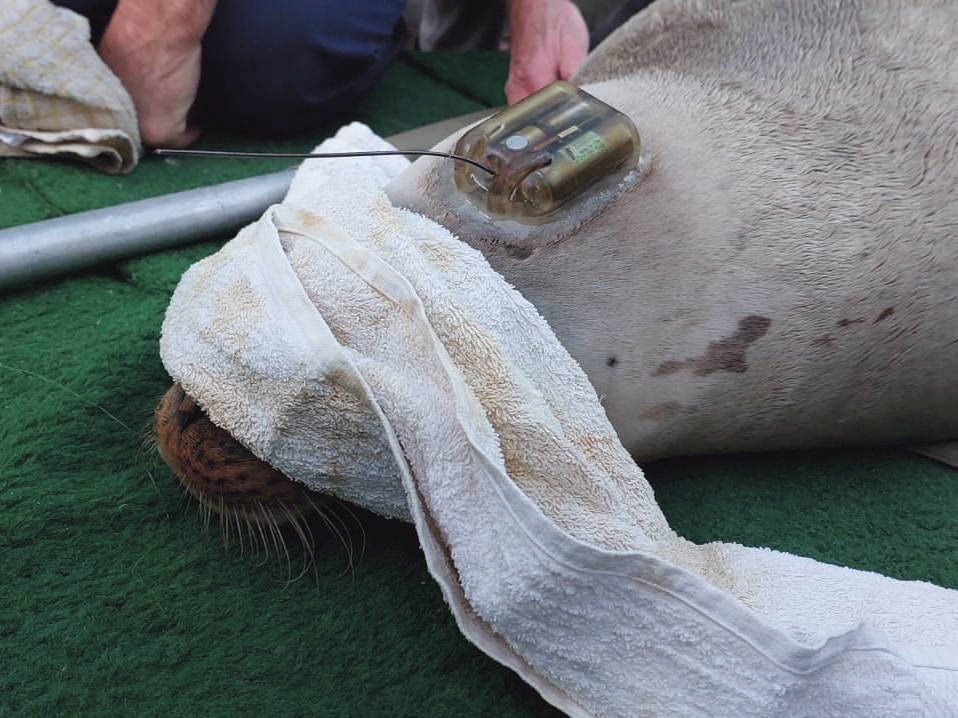
A satellite tag was fitted to Emily’s head while she was kept at Bayworld. (Photo: Greg Hofmeyr)
Rare visitors
Hofmeyr posted about Emily on Bayworld’s Facebook page on Tuesday, saying that after initially receiving photographs of her, he realised she was a crabeater.
“Crabeater seals live in the pack ice around Antarctica, and very rarely come north. Only a few have been recorded as visitors to the South African coast,” his post reads.
Emily’s presence was therefore unusual.
Hofmeyr’s post continued: “Crabeater seals are not well suited to our beaches. They are suction feeders, eating small organisms under the ice. But on the South African coast they tend to swallow large amounts of sand…
“So I knew that we had to remove this seal from the beach as soon as possible.
“In fact, when a team from Bayworld got to the beach, we found that the seal’s mouth was full of sand.”
Rehabilitated and tagged
A special net was used to carefully capture Emily, who at that point was very stressed. She was named by one of the first people to find her.
She was then taken to Bayworld and released into a rehabilitation pen. A vet examined her and overall she was in good health.
Over two days she pooped out lots of sand, suggesting her system was clearing out and she would be fine.
Hofmeyr told Daily Maverick that her rehabilitation included ample food and keeping track of her condition.
On the evening of Friday, 12 August 2024, Emily was sedated, samples were taken from her, she was given green flipper tags with numbers as labels, and a satellite tag was fixed to her head.
The following morning, she was ready for release.
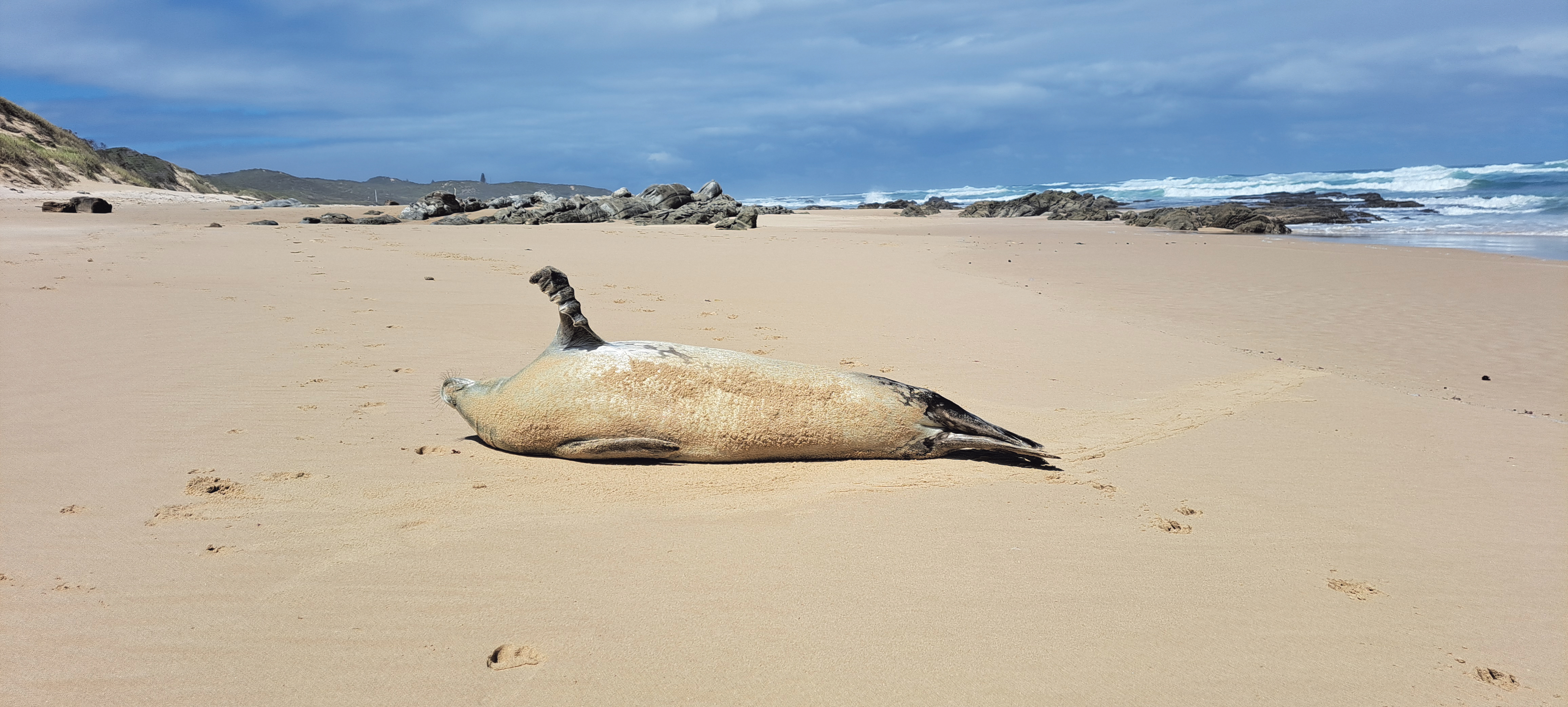
Emily seemed very tired when she was found on the beach. (Photo: Greg Hofmeyr)
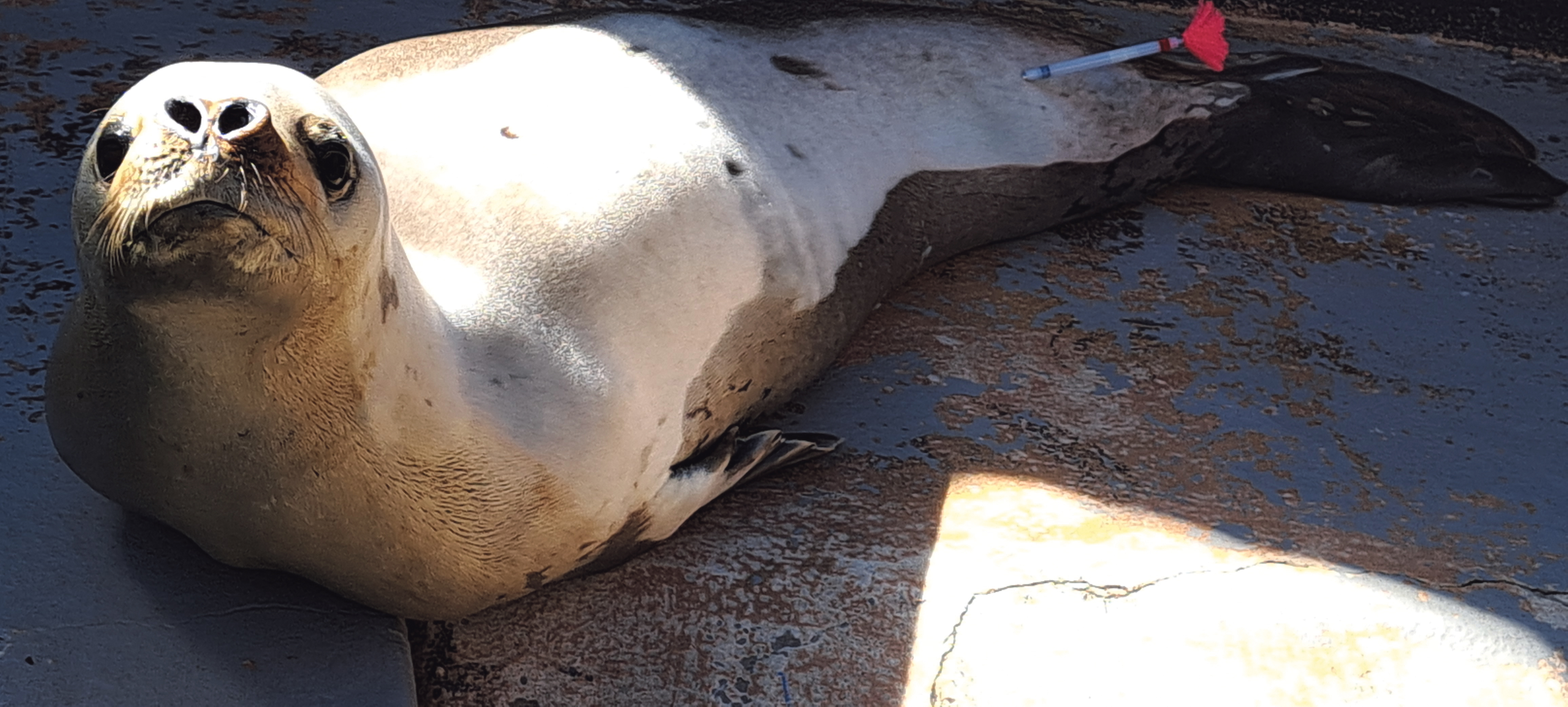
Emily during her rehabilitation at Bayworld. (Photo: Greg Hofmeyr)
Journey to Antarctica
Hofmeyr’s post said Emily was carefully loaded into a crate, transported to the harbour and then manoeuvred onto a boat which made its way south.
“After almost four hours, the sea turned a dark blue and albatrosses flew around the vessel. We were 40 nautical miles (74km) south of Cape Recife and over the middle of the Agulhas Current.
“The seabed was 1,000m below us. This body of water was flowing strongly southwest. This was the conveyor belt that we wanted to drop Emily into to give her all the assistance possible for her to return to Antarctica.”
Emily, nervous at first, eventually dropped into the ocean and started swimming.
She now faces a journey to Antarctica that her rescuers hope she, unlike some of the other crabeaters that have ended up in South Africa, will be able to complete.
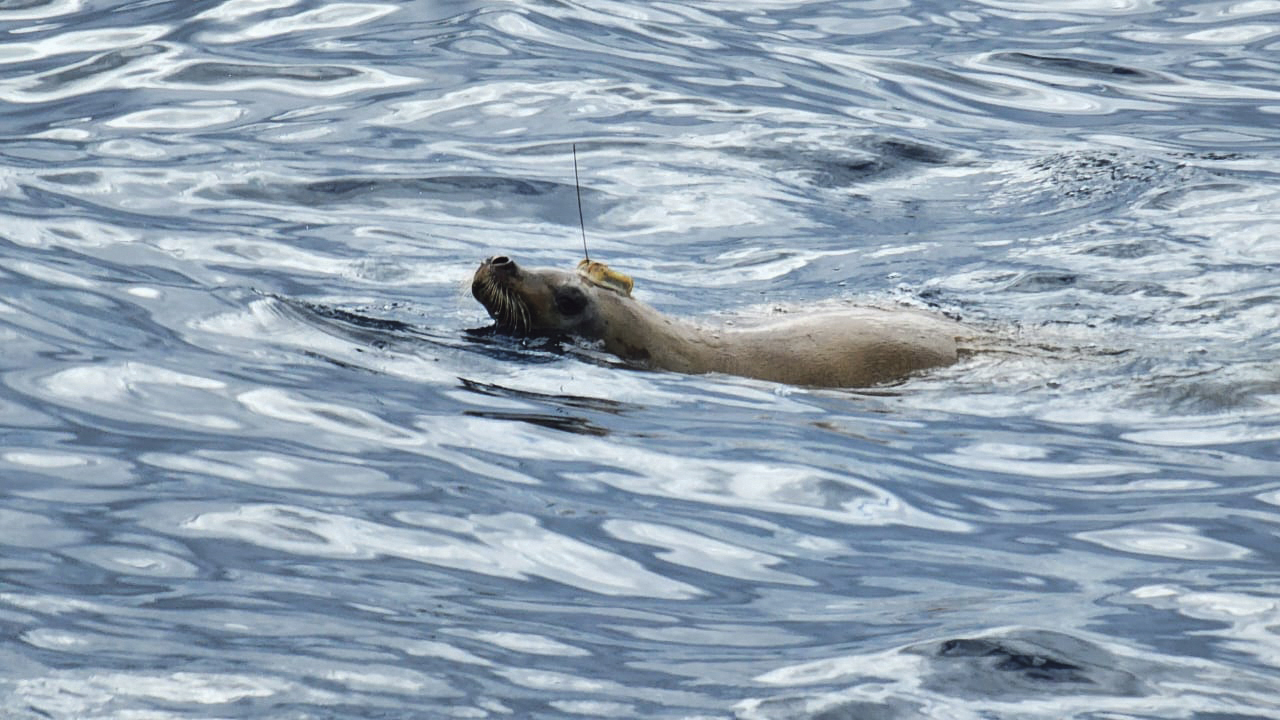
Emily was released over the middle of the Agulhas Current. (Photo: Greg Hofmeyr)
In a previous incident, a crabeater seal, given the name Pearl, was discovered along the Wilderness shoreline near the town of Mossel Bay on 7 May 2021.
After being rehabilitated over three months and being released into the sea, she was discovered again along the coast in September that year.
Read more in Daily Maverick: Lessons aquatic: What the travels of three seals to South Africa can teach marine researchers
Pearl died due to what rescuers fear will happen to crabeaters who end up along this country’s coastline. She ingested sand while trying to eat other little things and its weight twisted her gut, causing fatal colic.
Losing track
Months earlier, on 28 January 2021, two crabeater seals ended up at different spots along South Africa’s coast – in East London and along the KwaZulu-Natal coastline.
The East London crabeater seal, named Sebastian, was taken to Gqeberha’s Bayworld for rehabilitation. The other, who was called Ragnar, was taken to uShaka Sea World in Durban.
Read more in Daily Maverick: Crabeater seals: A tale of two atypical adventurers
The following month, February 2021, the two became the first to be fitted with satellite trackers and released into the sea from South Africa.
This week, Hofmeyr explained to Daily Maverick that it was not entirely clear what had happened to them. Sebastian “swam west across the Agulhas Bank and we lost track of his signal after four days”.
As for Ragnar, he “followed the SA coast east until we lost track of his signal after about 12 days”. DM
This story first appeared in our weekly Daily Maverick 168 newspaper, which is available countrywide for R35.






















Comments - Please login in order to comment.